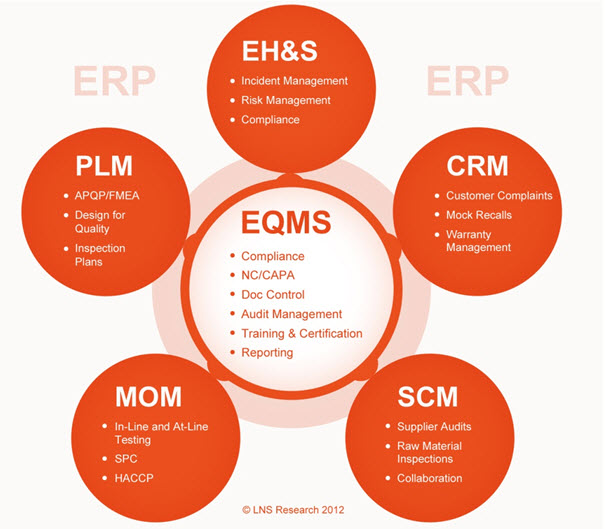EQMS Helps Deliver Operational Excellence
In our last post, we wrote about the LNS Research model of operational excellence and its relationship with quality management. Within this model, we advocate for companies to align the right mix of people, processes, and technology with strategic objectives. It should be noted, however, that operational excellence is meant to be viewed as a dynamic concept. Companies should leverage it with the mindset that it will evolve over time as operations grow and maturate. This is particularly true when it comes to the management of quality.
Typically, companies develop a quality management system to ensure the production and delivery of high quality products. While this may start as a set of manual and paper-based processes, resources need to be evaluated over time. As the complexities of products and processes increase, homegrown solutions and legacy applications can quickly become inadequate. As a consequence, more and more we’re seeing a shift toward the use of Enterprise Quality Management Software (EQMS), a holistic approach to managing quality in operations.
Below, we’ll discuss what exactly EQMS is and how executives can leverage it by building it into their models of operational excellence.

What is EQMS and Why is it Important?
It's no surprise that executives want to promote quality across the value chain, but an appropriate arena for cross-functional collaboration and communication is often missing. For effective quality management, data from different departments and processes needs to be visible throughout the organization. EQMS is proving to be the most effective method for this. It's a pervasive solution that facilitates quality in touching every part of the value chain from PLM to EH&S, CRM, MOM, and SCM (see figure). It works to centralize, standardize, and streamline quality data, providing executives with the resources needed to make more informed decisions.
The use of EQMS allows executives to easily integrate quality into cross-functional processes. For instance, a quality-based approach of tying CRM and PLM to one another can directly benefit FMEA in engineering, as well as help to reduce the warranty reserve down the road. Similarly, considering enterprise quality capabilities in MOM and SCM decisions can aid in the reduction of supplier defect rates and, consequently, your own scrap rate. The solution creates an environment to share cross-functional information that would be very difficult (if possible at all) to replicate with manual and paper-based processes.
Building EQMS into Operational Excellence
EQMS modernizes the process and technology pieces of the operational excellence model. It can play a central role in helping to realize the strategic objectives that executives lay out. While these objectives may be financial, operational, or quality related, to effectively work toward them requires a seamless flow of information from across the value chain. EQMS provides this, connecting data from product ideation through distribution in one central location. With its degree of global visibility, EQMS has helped many companies realize operational excellence and create an environment for continuous improvement.
The market for EQMS is maturing, with vendors rapidly expanding capabilities to meet the needs of specific products, processes, subverticals, and so on. Although the selection process takes significant resources in terms of time and capital, many executives will tell you that the arduous process is worth it.
LNS Research has established a Global Quality Advisory Council, where executives will be able to learn best practices from the research and other council members. Click on the link above to find more information about the council.
 Written by
Written by